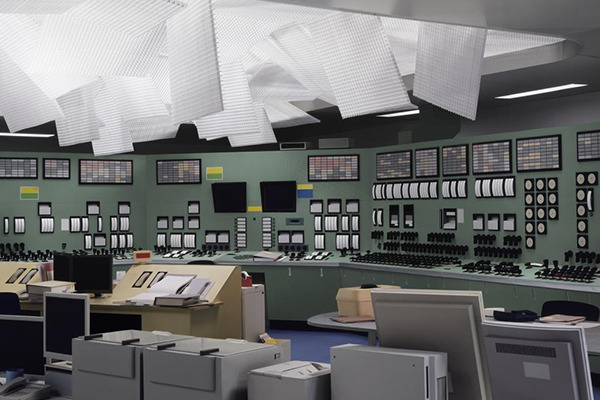Tokyo: Utopian Diaspora, metropolis, urban epicentre of earthquakes and high rise towers. In a country where the low birth rate is causing major concern but with the 2020 Olympics and Paralympics beginning to enter Japans` collective consciousness, the current show at MOT take a look at the past and future in an attempt to contextualise contemporary work within the backdrop of 1980s Tokyo.
By Rachel Carvosso.
Section one is based on the idea of “Keywords” including concepts such as “Sociopolitical Urbanscape”. “Neoteny”, “Parallel World” and “Human + Technology”. Japanese curators based in Tokyo take a look at the city with an insiders view. Section two comprises of new works by artists from Japan and abroad responding to a contemporary idea of the city.
The exhibition is conceptually framed by the first rooms, time capsule-like homage’s to the 1980s synth band Yellow Magic Orchestra (YMO). Influenced by musicians such as Kraftwerk creating Neo pop a collage of borrowed references eaten up and regurgitated as something new. Represented a break in the preceding generations with a fresh and eclectic sense of freedom mirroring the economic success on a global scale, life was good and the bubble had yet to burst.
The show itself attempts to be an almost fractal look at the epicentre of Japan, the first few rooms feeling like a time capsule of photos and record covers. Blending retro commercials of cassette tapes with footage of live shows manages to seem contemporary in both sound and look.
 Image: Thomas Demand, Control Room, 2011 © Thomas Demand, VG Build-Kunst, Bonn / JASPAR, Tokyo Collection: Museum of Contemporary Art Tokyo.
Image: Thomas Demand, Control Room, 2011 © Thomas Demand, VG Build-Kunst, Bonn / JASPAR, Tokyo Collection: Museum of Contemporary Art Tokyo.
Moving through rooms with a range of approaches from the flat video screens of a large completely synthetically created animation of Tokyo mapped out by Tabor Robak in the piece 20XX, to the robotics installation of TCF `s 300EFA3011E8DCBE1f1BDBAA63CDD3EDF82F63FB28F31F1BEEOE12C7CF9. Technologically minimal conceptual interventions of Chinese artists Lin Ke – who despite never having never visited Tokyo – responds to it`s architectural iconography reflecting a kind of notion of a liminal space within which the concept of Tokyo exists as much as it`s physical reality.
Work by Saadane Afif `S collaboration is an appropriation using text created by various invited artists which will later be re-interpreted by Tokyo Pop band Her Ghost Friend. Photographs curated by Mika Ninagawa stand out against a very bright background bringing the inhabitants of Tokyo to the limelight. Transvestites, Pop stars and various sub cultures are represented emphasising the obsession with the creation of a persona or image. Tokyo streets become alive in neon inspired faces that are as much part of the landscape of Instagram and social media as the city itself.
The second division is a hotchpotch of work including performance artist Chin –Pom whose irreverent antics such as the air painting of the sound of an explosion over the skies in Hiroshima has offended some, but they are also known for bringing the issues of Fukushima to the Art World`s attention. In this exhibition repulsion and attraction co-exist as a stuffed rat is re-imagined as Pikachu.
While the video work next to it shows the collective screaming at the rat. Later a salon-like four walls shows off Japanese painting from the 1980s to the present day. Work by painters such as Yoshimoto Nara and Izumi Kato hang and there is a clear sense that there is continuity within the last quarter of a century.
The show comes to a close in the final rooms with Tetsuki Matsue`s stand-out video piece “Extremely private view concerning Tokyo and I” a beautiful mini documentary weaves a narrative of ancestral lineage from Korea to Japan, and his subsequent struggle with issues of identity. Gently interspersed with footage from the present where his European wife is giving birth to their first child in Japan, it brings to light issues which the current Tokyo inhabitants face and will need to deal with in the coming decades.
About MOT:
The Museum of Contemporary Art Tokyo, was opened in 1995 to systematically research, collect, preserve and display contemporary art that has been created both in Japan and overseas since 1945.
Lead image: Yellow Magic Orchestra, 1979 © Photo by Masayoshi Sukita.
Words: Rachel Carvosso © Artlyst 2015.
Tokyo Art Meeting Ⅵ “TOKYO” – Sensing the Cultural Magma of the Metropolis – Museum of Contemporary Art, Tokyo – until 14 February 2016.
